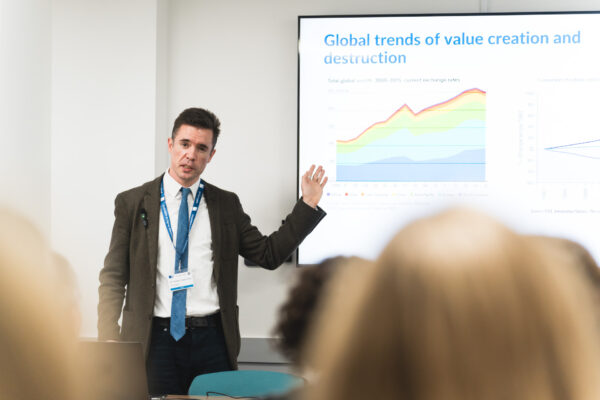
| Date | Author |
|---|---|
| 5th February 2024 | Dr Thomas Owen-Smith, SUMS Consultant |
Universities have a significant role to play in shaping a shared knowledge economy to address global challenges that impact us all. Central to playing this part is the need for each institution to understand what this social value looks like in their context and how they contribute most effectively to shared goals rooted in economic and societal purpose.
Here, SUMS Consultant Dr Thomas Owen-Smith explores the benefits universities provide to society and individuals, and the cost of delivering them.
Few other organisations can match the contributions that universities make through their education, research and ability to bring people together.
The UK HE sector and its regulatory sphere have sophisticated ways of reflecting some of this. Research impact is evaluated through the Research Excellence Framework for example, and the Knowledge Exchange Framework assesses the outcomes of a diverse set of activities through which universities engage with other sectors and the public.
Some institutions and mission groups have undertaken analyses of their economic impacts. But even these generally do not account for the value that accrues to society from the public goods created through universities’ educational activities; and the difference they make to human capital, social development, economic dynamism and strong institutions.
Nor do the regulators. In England, the value of university education is framed as essentially the monetary ‘premium’ to individual graduates. Societal and non-monetary benefits (admittedly harder to measure) barely feature. It is perhaps little wonder that rankings are stepping in to fill this void.
Contemporary thinking about sustainable futures, such as the United Nations Sustainable Development Goals, Kate Raworth’s ‘Doughnut’ and others emphasise the dependencies between our economy, society and environment: over the long-term, objectives in one sphere cannot be achieved without sufficient resilience in the others.
While universities’ social and economic benefits have been justly celebrated, the UK HE sector’s carbon emissions alone are comparable to a small country, and its full environmental footprint remains unmeasured.
Becoming environmentally sustainable will go beyond technical interventions. Improvements to infrastructure are essential, but to eliminate or even decisively reduce detrimental impacts on nature, fundamental changes to ways of doing business will be needed.
Approaches that help organisations to think about such changes are developing fast, many of them outside the HE sector. They include:
- Materiality assessments, which allow organisations to better understand their impacts through scanning key topics and engagement with their stakeholders
- Integrated reporting, which provides a codified framework for reflecting the impacts of organisations beyond their financials
- Models for foresight and future modelling which appropriately reflect strategic sustainability risks, and shed light on how organisations’ own operations may exacerbate those
- Approaches such as natural capital and carbon pricing, which put a true value or cost on what were long treated as externalities.
Some of these are being spurred by regulation. From this year, larger companies in the UK are obliged to make disclosures in their statutory reporting around how they manage risks and opportunities related to climate. From 2025, large companies in the European Union will be expected to use a “double materiality” approach to report both sustainability impacts on their business and their own impacts on people and the environment. Despite the short-term news cycle, the direction of travel appears clear.
Such approaches can be useful for universities too – supporting a confident narrative around overall benefits they provide to society and individuals, a clearer view of overall costs of achieving those benefits, and what needs to be done to address them.








